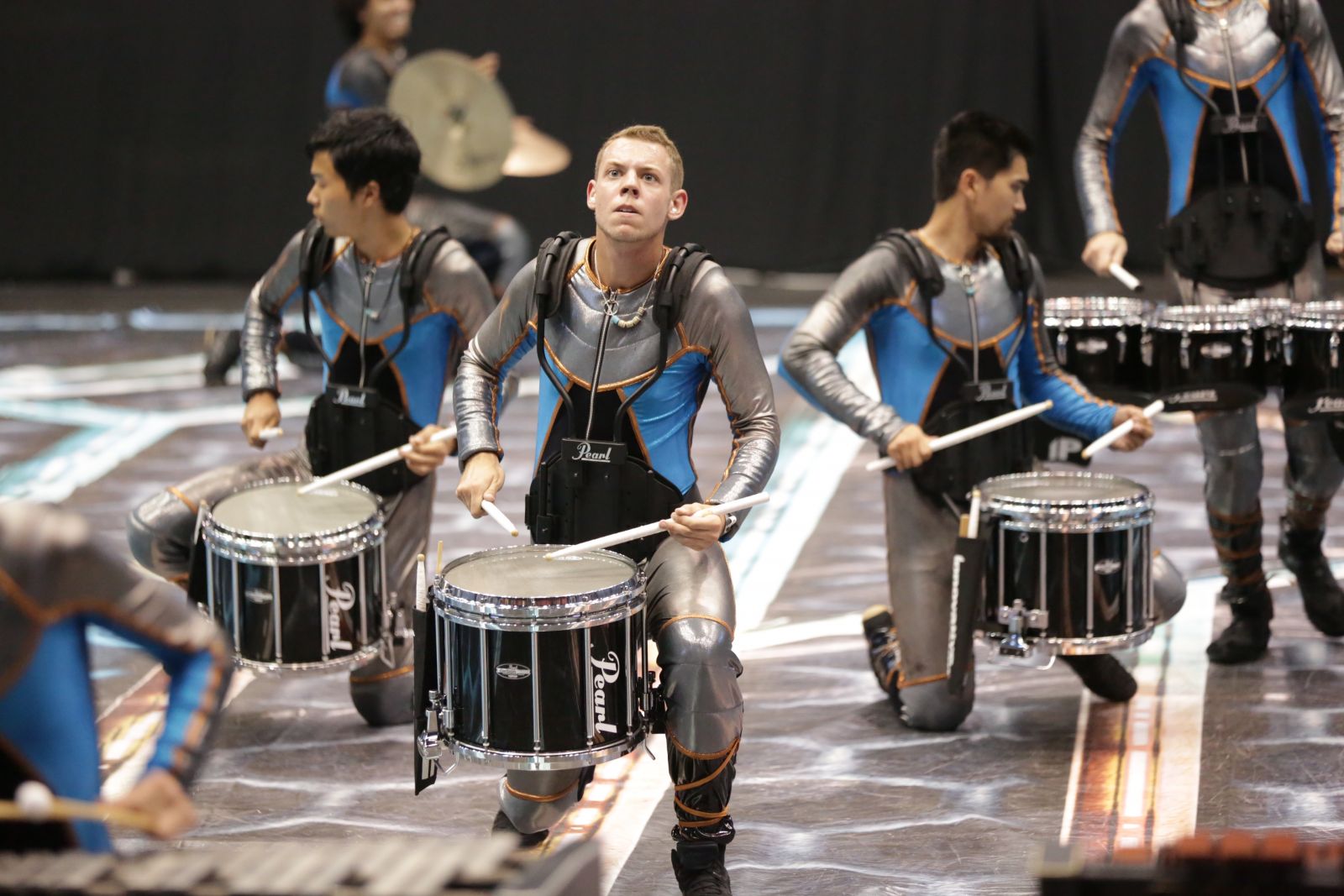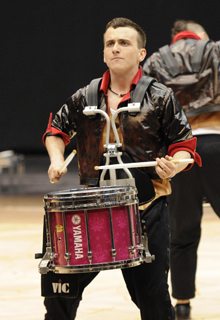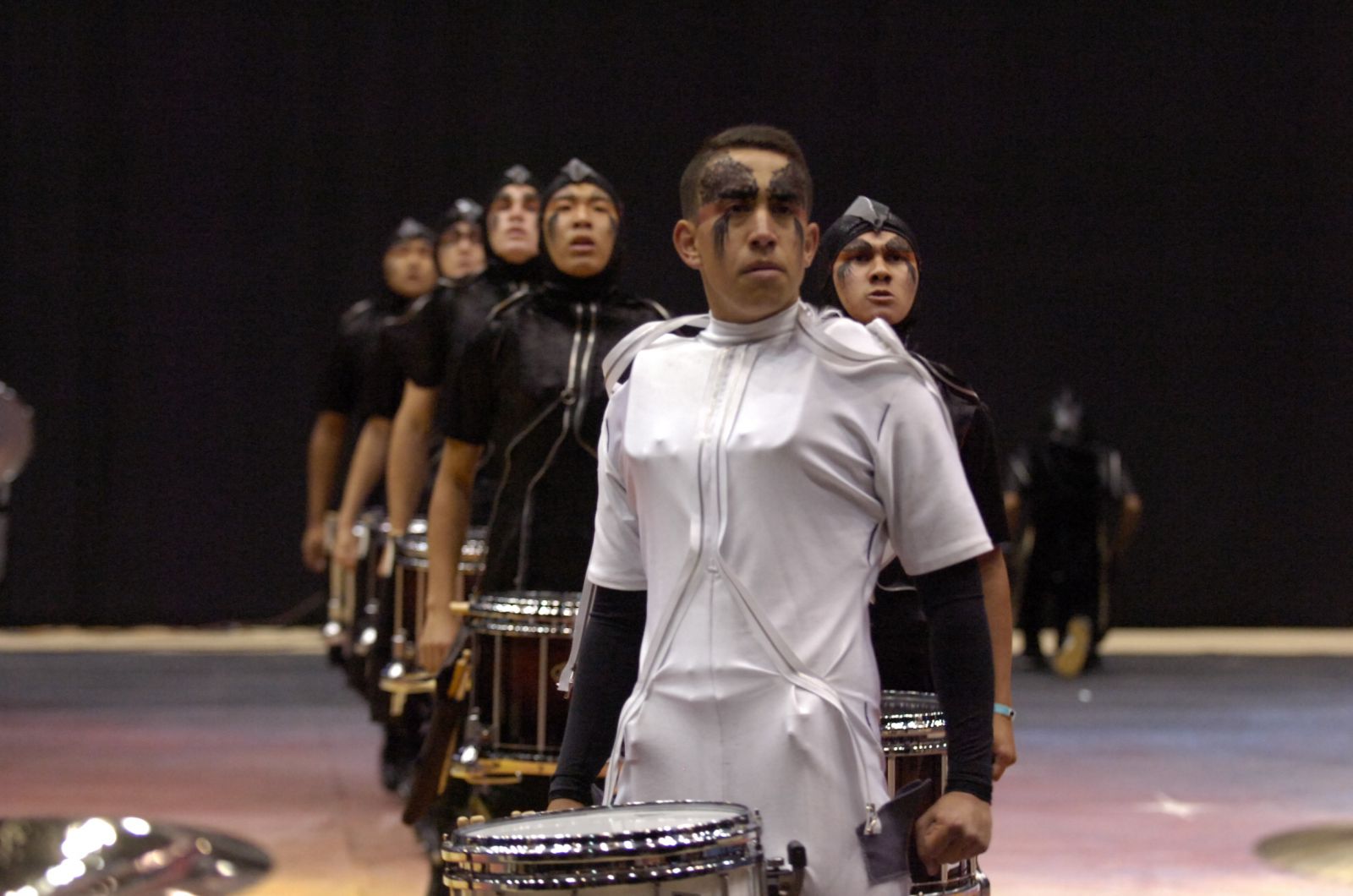By Dan Schack
The position of “center snare” in a marching music ensemble is a loaded term. People equate many different characteristics with this position, some positive and some negative. For most, it is understood that the center snare is a snare drummer who is usually a veteran member who has shown strong leadership skills within the ensemble. The center snare is, in most cases, the section leader.

The term also holds other connotations. The center snare is known to have a large personality to match the bombastic nature of their instrument, the snare drum. They can be bullheaded at times, demanding everyone to play their tempo. They are in charge of the drum major’s time in a drum corps setting, making their role vital to the cohesiveness of the music ensemble. A bad egg in the center position can also cause turmoil amongst members who are looking to them as the example. Look through the annals of drum line, and you will find some seriously big personalities who have held the position and have gone on to accomplish great things within the marching arts activity.

Traditionally, the center snare of a drum corps or marching band is the source of tempo coming from the performance field. The drum major watches the center snare’s feet, deriving the tempo’s ensemble from what they see. This can put pressure on the center snare to be consistently accurate. In an indoor percussion ensemble, the role of a center snare can vary slightly depending on the amount of responsibility they are allotted.
The center snare frequently acts as the liaison between the staff and the membership. They are expected to have a deeper understanding of the goals of the design team and staff, and make sure the other members are all on board with the direction of the ensemble. They are entrusted with inside information from the staff and are expected to act with maturity on and off the floor. “A group’s identity should be determined by everyone contributing their own personality to the overall vibe and dynamic of the ensemble, with the center snare having the responsibility of mediating to help maintain a positive atmosphere,” notes Alex Musliner, two-year center snare for Independent World Class Finalists Cadets Winter Percussion and snare drummer for Carolina Crown Drum and Bugle Corps. “Having every member on the same page is essential to working positively with the staff.” In Alex’s opinion, it is his job to allow the ensemble to work and socialize naturally, without forcing an arbitrary vibe counter to what feels comfortable. Even with the added responsibilities, the center position is not merely a thankless job.
In WGI ensembles, the center snare is a notoriously explosive performer who draws the audiences’ eye and is utilized by the design team as a character or symbol depending on the show concept. Many shows throughout WGI that have used individual characterization pull the center snare from drill forms for both visual and musical solos. The position has taken on a subtext all its own, moving away from the traditional responsibilities of a center snare in drum corps or marching band.
 A center snare in WGI is not only confined to worrying about tempo and holding the group accountable for their preparation and performance. With technology like YouTube and Instagram, the “center snare” drummer has been catapulted into the spotlight, where they become “band famous” within the context of our small community. Audience members are now able to recognize a drummer from the WGI season in a DCI drumline, like seeing an actor portray a character in different movies and feeling a sense of companionship and acknowledgment. Fan’s ability to interact with center snares through social media provides a level of accessibility and familiarity that is new to our activity. And this isn’t a bad thing! Prospective auditionees now have a method of gaining insight as to how to successfully audition for ensembles that previously appeared intimidating or out of reach. An increase in outreach leads to more students going out for auditions and ultimately more involvement in Winter Guard International.
A center snare in WGI is not only confined to worrying about tempo and holding the group accountable for their preparation and performance. With technology like YouTube and Instagram, the “center snare” drummer has been catapulted into the spotlight, where they become “band famous” within the context of our small community. Audience members are now able to recognize a drummer from the WGI season in a DCI drumline, like seeing an actor portray a character in different movies and feeling a sense of companionship and acknowledgment. Fan’s ability to interact with center snares through social media provides a level of accessibility and familiarity that is new to our activity. And this isn’t a bad thing! Prospective auditionees now have a method of gaining insight as to how to successfully audition for ensembles that previously appeared intimidating or out of reach. An increase in outreach leads to more students going out for auditions and ultimately more involvement in Winter Guard International.

About the Author: Dan Schack is an active designer and educator in DCI, WGI, and BOA. He currently works for competitive ensembles including the Crossmen Drum and Bugle Corps, Cadets Winter Percussion, Rhythm X and several other scholastic percussion ensembles in the Dayton, Ohio area. He holds a degree in English and Women’s Studies from the University ofConnecticut and is a customer service representative at Fred J. Miller, Inc. Dan has been a contributing freelance writer for Winter Guard International since 2012.






























